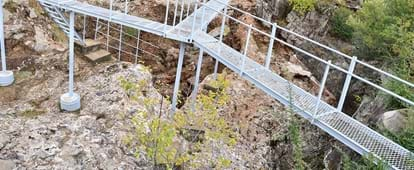By creating an account, I agree to the
Terms of service and Privacy policy
Choose your country and language:
Africa
Americas
Asia Pacific
Europe
WWhether you’re a five-year-old or almost as old as the fossils themselves, it seems that a fascination with dinosaurs never goes away. Hire a guide and head to the hills to see ancient evolution preserved in stone.
South Africa is one of the best countries in the world to view evidence of dinosaurs. As part of the original supercontinent Gondwana, there are a number of fossils and fossil prints to be seen on hikes, in museums and as part of small-town collections.

CClarens is a great place to start your dinosaur hunt. Get a guide and head to the Golden Gate National Park to see the trace prints of massive Jurassic dinosaurs that roamed the earth about 200 million years ago. In the same area, you can view the 190-million-year-old fossilised egg of a Massospondylus. These dinosaurs lived in the late Triassic and early Jurassic periods, approximately 185 million to 230 million years ago. Growing up to 5m long, they roamed in great herds across Gondwana, between the areas that are now Southern Africa and Russia.
Recently, one of the most exciting finds has been Antetonitrus, a 210-million-year-old sauropod. Found in the Ladybrand District of the Free State, the fossil dates from the very beginning of the dinosaur age and sheds light on the evolution of our planet as well as that of these great lizards.
IIf you’re in the Karoo, you’ll be able to view evidence of dinosaurs from about 250 million years ago. For the really, really old tracks, early Jurassic traces are in the Drakensberg and Maluti mountains in the Free State and Eastern Cape provinces. Or visit Nieu-Bethesda, this area has produced the most extensive evidence of life on earth. At Ganora Fossil Museum, the fossils on exhibit are roughly 280 million years old, the time when reptiles roamed the earth before the age of the dinosaurs and long before there were flowers, grasses, birds and mammals. The Kitching Fossil Exploration Centre is situated next to the world-famous Owl House and tells the story of life in South Africa 253 million years ago.
Lastly, the Maropeng Visitors Centre in the Cradle of Humankind is the official visitors’ centre for the Cradle of Humankind, a World Heritage Site within easy distance of Johannesburg and Pretoria. Its name means “returning to the place of origin” in Setswana, one of South Africa’s 11 official languages. At the Maropeng Visitor Centre, you will journey back in time from the start of our universe, some 14 billion years ago, to the present and beyond.
For perspective think about this—evidence of the earliest ancient humans puts our existence at six-to-seven million years old; homo sapiens, humans that are similar to us, have been around for a maximum of 200 000 years. Dinosaurs, on the other hand, ruled for about 120 million years, only dying out at the end of the Cretaceous Period, some 65 million years ago.

Related articles

